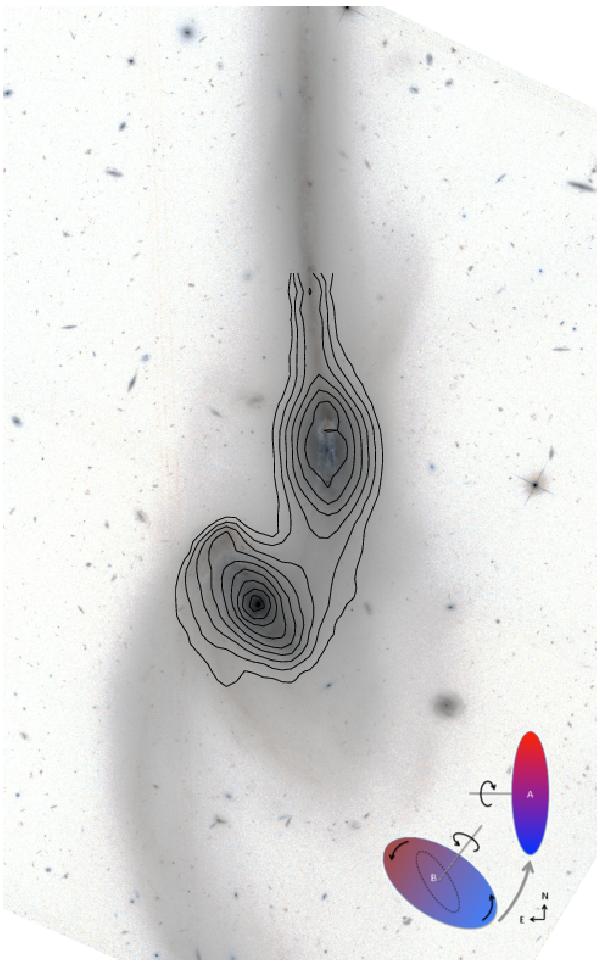Fig. 1

False colour image 2.4′× 3.5′ in size in filters F606W (V, green channel) and F814W (I, red channel) for NGC 4676 using the HST-ACS/WFC (ACS Early Release Observations, Proposal ID 8992, P.I. Ford). Overlaid are V-band contours constructed from the CALIFA integral field datacubes, with the outermost contour at 23 mag/arcsec2 and contours spaced by 0.45 mag/arcsec2. The inlaid schematic shows the main kinematical properties of the Mice, as determined from long-slit spectroscopic observations (Burbidge & Burbidge 1961; Stockton 1974), the CALIFA IFS data (Sect. 4), HI maps and comparisons with N-body simulations (Barnes 2004). Black arrows indicate the direction of rotation of the disks, defined such that the disk of NGC 4676B (SE) is inclined away from the line-of-sight. NGC 4676A is viewed almost exactly edge-on. The thick grey arrow indicates the approximate track that NGC 4676A (NW) has taken relative to NGC 4676B. The pair are observed close to apocentre, with NGC 4676A receding from NGC 4676B at ~160 km s-1 (Sect. 4).
Current usage metrics show cumulative count of Article Views (full-text article views including HTML views, PDF and ePub downloads, according to the available data) and Abstracts Views on Vision4Press platform.
Data correspond to usage on the plateform after 2015. The current usage metrics is available 48-96 hours after online publication and is updated daily on week days.
Initial download of the metrics may take a while.


